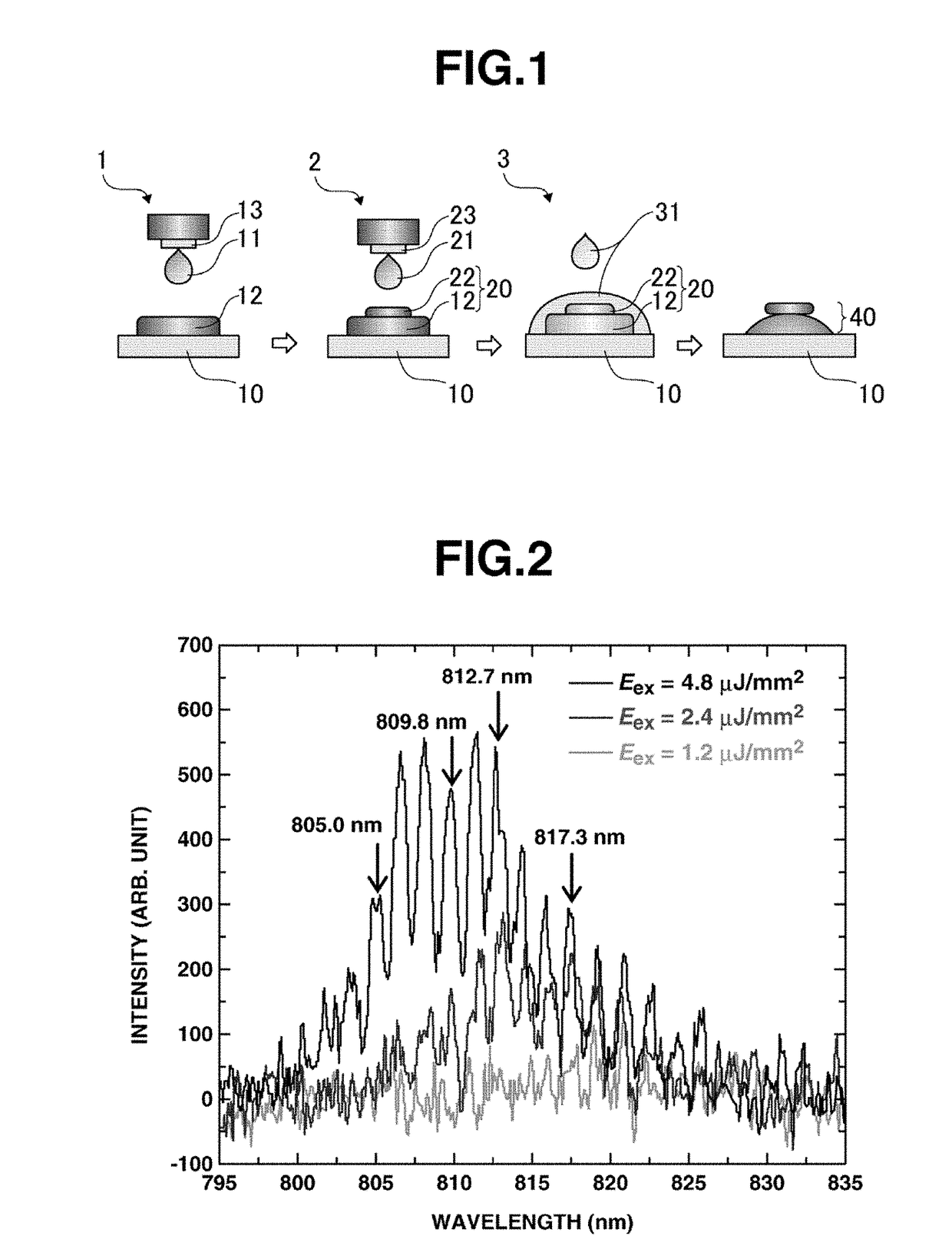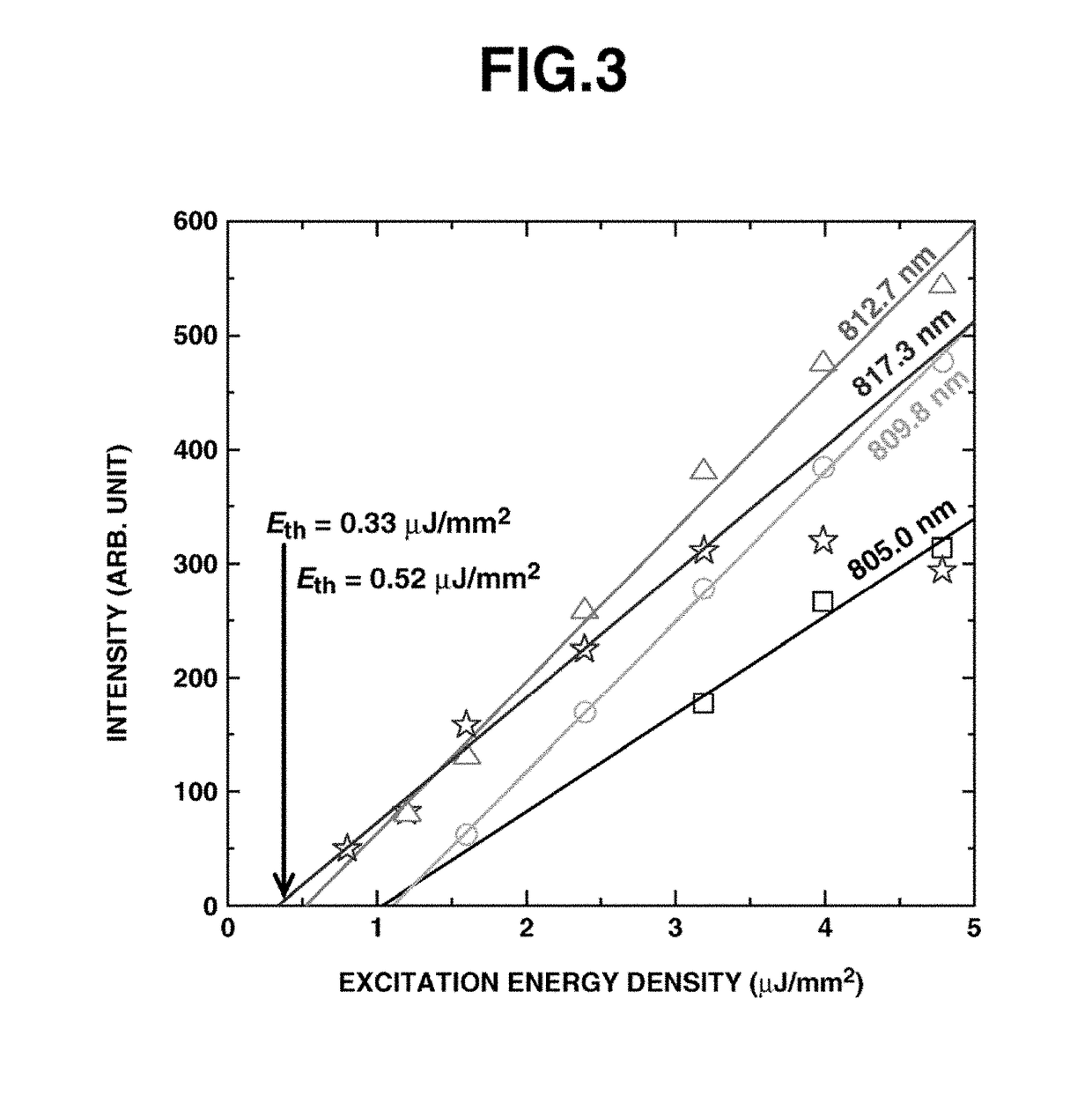Method for producing organic microdisk structure
- Summary
- Abstract
- Description
- Claims
- Application Information
AI Technical Summary
Benefits of technology
Problems solved by technology
Method used
Image
Examples
production example 1
Preparation of First Ink
[0161]Using a procedure similar to that in Working Example 1 of WO 2010 / 137724, a fluorinated acrylic-based HBP synthesized from ethylene glycol dimethacrylate, 1H,1H,5H-octafluoropentyl methacrylate and methyl 2,2′-azobisisobutyrate was dissolved in 1,4-dioxane, thereby preparing a first ink having a concentration of 10 wt %.
production example 2
Preparation of Second Ink
[0162]Using a procedure similar to that in Working Example 98 of WO 2010 / 128661, a triazine-type HBP synthesized from m-phenylenediamine, 2,4,6-trichloro-1,3,5-triazine and aniline, and the laser dye LDS798 (Exiton) were both dissolved in cyclohexanone, thereby preparing a second ink having a polymer concentration of 10 wt % and containing 2 mM of dye.
working example 1
Fabrication of Microdisk Structure
(1) Cladding Layer-Forming Step
[0163]As shown in FIG. 1, using a 70 μm diameter inkjet nozzle 13, printing was carried out by discharging and building up five shots of the first ink 11 obtained in Production Example 1 onto a PET substrate 10 so as to form a cladding layer 12 having a spot diameter of 250 to 300 μm.
(2) Core Layer-Forming Step
[0164]Next, using a 50 μm diameter inkjet nozzle 23, the second ink 21 prepared in Production Example 2 was discharged and printed as a single shot onto the center of the cladding layer 12 formed above, thereby forming a core layer 22 having a spot diameter of about 100 μm and producing a stack 20 of the cladding layer 12 and the core layer 22.
(3) Etching Step
[0165]Using 1,4-dioxane as the etchant 31, the operation of carrying out a 1-second etch by charging 0.2 μL of etchant 31 per individual stack 20 in a single etching pass and then removing the etchant 31 by soaking it up with clean paper lateral to the stack...
PUM
| Property | Measurement | Unit |
|---|---|---|
| Concentration | aaaaa | aaaaa |
| Structure | aaaaa | aaaaa |
| Refractive index | aaaaa | aaaaa |
Abstract
Description
Claims
Application Information
 Login to View More
Login to View More - R&D
- Intellectual Property
- Life Sciences
- Materials
- Tech Scout
- Unparalleled Data Quality
- Higher Quality Content
- 60% Fewer Hallucinations
Browse by: Latest US Patents, China's latest patents, Technical Efficacy Thesaurus, Application Domain, Technology Topic, Popular Technical Reports.
© 2025 PatSnap. All rights reserved.Legal|Privacy policy|Modern Slavery Act Transparency Statement|Sitemap|About US| Contact US: help@patsnap.com



